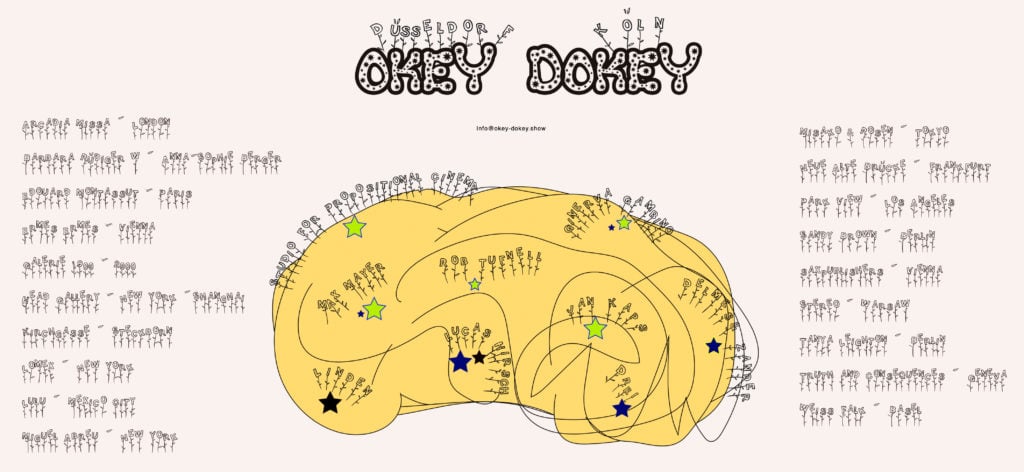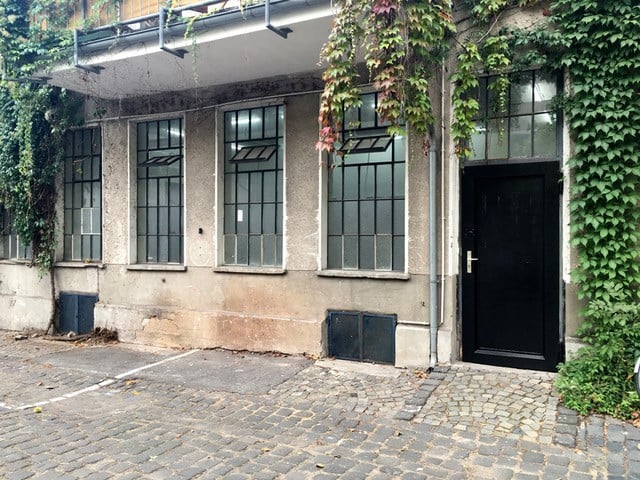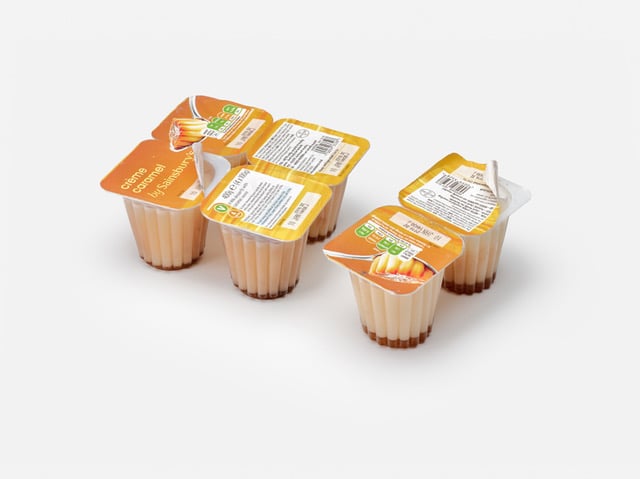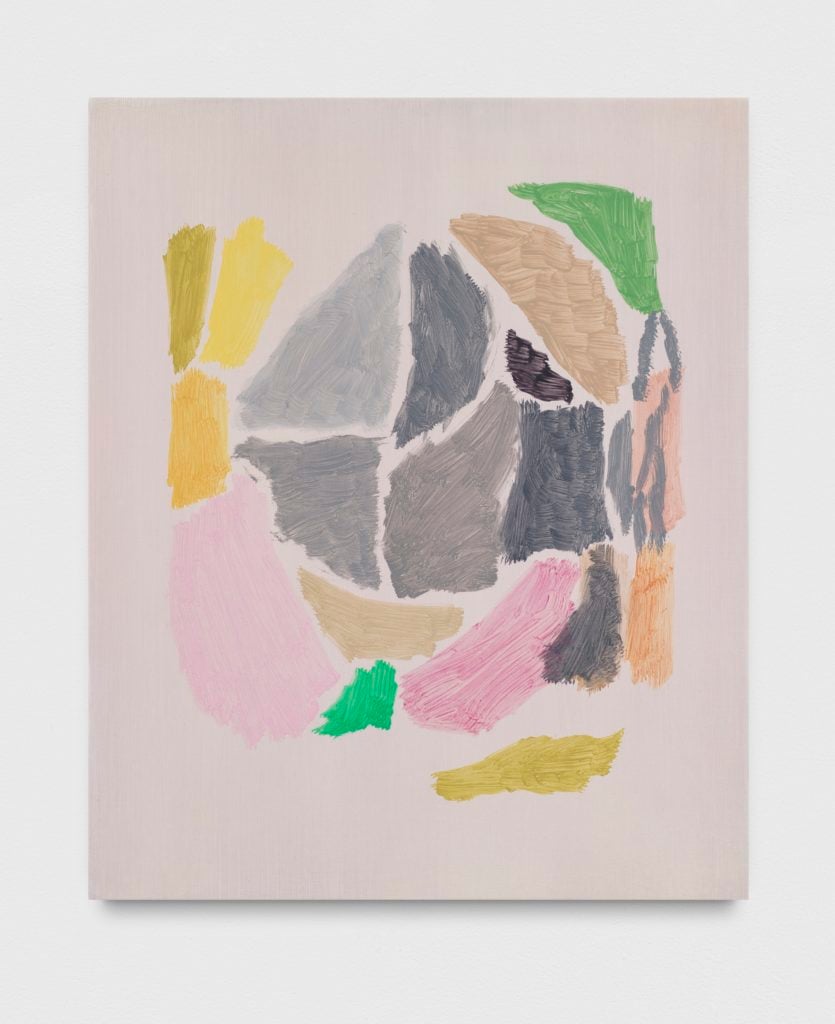Galleries
Now Dubbed ‘Okey Dokey,’ a Viral New Collaborative Gallery Model Spreads to Germany
Inspired by Condo, the latest iteration of the co-op phenomenon is coming to the Rhineland.

Inspired by Condo, the latest iteration of the co-op phenomenon is coming to the Rhineland.

As the slew of recent closures in New York, London, and Berlin show, existing market models are becoming increasingly unsustainable for mid-sized galleries. The costs associated with participation in major art fairs are often prohibitive for middle-market dealers, who have to sell out the booth to even come close to breaking even.
Like fellow dealers in London and New York, gallerists based in Germany’s Rhineland region are searching for alternatives through collaboration, and have launched a new gallery-share initiative called Okey Dokey, set to take place in September. Initiated by with-it galleries Jan Kaps, Max Mayer, and Ginerva Gambino, Okey Dokey will bring out-of-area galleries together at nine different spaces in Düsseldorf and Cologne.
Over a decade ago, one could argue that Berlin led the path in the search for new models with the launch of Berlin Gallery Weekend; lacking a strong fair, the format had proven successful in bringing collectors to a city without a significant collector base. Now, when even collectors are fatigued with too much traveling, dealers are finding new ways to come to them.

View of Ginerva Gambino gallery from outside, courtesy Ginerva Gambino.
These kind of co-operative setups, similar to Vanessa Carlos‘s Condo, are thriving. With Condo, which is just finishing up a successful New York debut and is in development for iterations in Shanghai and Mexico City, Carlos initiated a model in which galleries temporarily lend their spaces to foreign dealers, pooling resources and sometimes collaborating on exhibitions.
Okey Dokey co-organizer and Ginerva Gambino founder, Laura Henseler, discussed the striking name for the new platform with artnet News. It might call to mind the late Konrad Fischer, the influential German dealer who changed the game for contemporary art galleries when he opened his Düsseldorf gallery in 1967. “It is true that the name references Fischer’s infamous catch phrase,” Henseler conceded, “though the intent behind it was not necessarily to reference him specifically but rather the Rhineland’s longstanding tradition of collaboration and exchange.”
The handle embodies the region’s can-do attitude well. Düsseldorf and Cologne enjoyed an industrial boom after the war and became important centers for contemporary art; the Rhineland is now home to an abundance of museums, galleries, and kunstvereins, as well as solid and savvy collectors.
The region’s cultural cornucopia is what makes the project viable: it draws mid-market dealers from elsewhere who want access to the Rhineland’s collector base but might not be able to join the local art fair, Art Cologne.
Speaking to artnet News, the organizers of Okey Dokey said that in addition to Condo, their platform was modeled after other projects, too, such as the Köln Show, which took place in Cologne in 1990 and was also organized by nine galleries without institutional help.
“The Rhineland, with all its institutional structures, its history and important collections, has always been a supportive place for emerging art,” co-founder Jan Kaps told artnet News. “Introducing our colleagues to these structures was a key point.”
“It’s quite an honor to welcome so many galleries and spaces with such unique programming,” he added. “More important is probably the idea of collaborating on an actual show, to share thoughts and content, as well as the idea of taking the visitor back to the actual gallery space,” he went on.
Jan Kaps’s eponymous gallery on Cologne’s Jülicher Strasse, will host Weiss Falk from Basel and Edoaurd Montassut from Paris. Adding to the already impressive range of Okey Dokey, Jan Kaps will also host young Viennese publishing house, Sax Publishers, which develops its publications in close collaboration with artists.
Also in Cologne, Henseler’s 35-square-meter emerging-art space will be hosting Ilaria Leoni’s Ermes Ermes gallery from Vienna/Rome, Paul-Aymar Mourgue d’Algue’s Geneva gallery Truth and Consequences, and Fiona Bate’s Sandy Brown, from Berlin. Like Ginerva Gambino, the foreign visitors have forgone the tradition of naming their spaces after their founders, and are fitting matches for Henseler’s upstart space. Together, they will curate a show on domesticity. What exactly we can look forward to seeing is still in the works, but Bate is set to bring pieces by Timothy Davies.

Timothy Davies, Creme Caramels (VI), (2016). Image courtesy Sandy Brown
Fifty kilometers to the North, in Düsseldorf, Max Mayer is getting ready to host New York’s Miguel Abreu Gallery, which will bring works by Rey Akdogan, as well as galleries Misako & Rosen, and Arcadia Missa.
Tokyo gallery Misako & Rosen will bring an ephemeral installation by Irish artist Fergus Feehily. Gallery director Jeffrey Rosen told artnet News that pressures facing Tokyo galleries are slightly different to those abroad. Galleries over there have a low overhead, but those gains are neutralized by the lack of exposure that comes from operating in a country without a strong culture of collecting contemporary art.
“Based in Tokyo, with a very limited market for contemporary art, we have been forced to be resourceful,” he said. “One of our most important strategies has been to partner with like-minded colleagues in similarly peripheral positions within the international art ecosystem and also to offer our support to alternative models to the standard art fair.”
Also visiting Max Mayer will be Rosza Farkas’s gallery, Arcadia Missa. Opened in the wake of the recession as non-profit project space, the gallery went commercial in 2014. When asked why she chose to participate in Okey Dokey, Farkas told artnet News: “For me it wasn’t a market decision, more that I think it’s great for one of my artists to have exposure in another space and a country where they aren’t as well-known.”
The gallery has participated in both editions of Condo and its history as a non-commercial space means Farkas is no stranger to collaboration. “Condo in London has shown that an organized approach to collaboration brings us new audiences, so when Max contacted me I of course immediately liked the idea,” said Farkas. She will be bringing work by Phoebe Collings-James, who has a solo exhibition opening the same weekend in New York’s 315 Gallery.
The sense of camaraderie among the gallerists of Okey Dokey provides a contrast to the fierce competition typically associated with the commercial art sphere. There’s a surprising eagerness to collaborate, which Laura Henseler explained, is nothing new: “Everyone involved regularly shares their experiences and opinions, and works together in one way or another. One side of Okey Dokey is to make these relationships visible and to expand them.”
Whether the future for mid-sized galleries lies solely in collaborative models like this has yet to be established. artnet News posed the question to the organizers of Okey Dokey, who didn’t see co-operative models as a viable alternative to having one’s own gallery, merely an important addition.
“Like on so many other levels, for example programming, galleries need to both have an eye on the local scene, and an awareness of the national and international discourses in which they embed their program,” said Max Mayer. “Galleries are in that sense an unavoidable exchange place between the local and global. What Okey Dokey does, is give an internationally relevant project a locally specific form.”
The timing of Okey Dokey’s preview weekend comes just before the beginning of Berlin Art Week, but for anyone wondering if the organizers were hoping to capitalize on international art collectors in the country for the more established event, Henseler assured us that the dates are coincidental; galleries in Germany have always opened in early September.

Fergus Feehily, Long Hall (2017). Photo: Trevor Good, courtesy of MISAKO & ROSEN.
All considered, the nod to Konrad Fischer in the project’s name is fitting. From the get-go, Fischer brought American artists like Bruce Nauman and Carl Andre to Europe for the first time. Unwilling to wait around for more established arbiters of taste to set trends, he made sure galleries, and indeed the Rhineland itself, made their own context in the art world.
Okey Dokey will run September 8 – September 30. See the full list of galleries participating, and some examples of the artwork below.
Delmes & Zander, Cologne
hosts
Neue Alte Brücke, Frankfurt
Galerie 1900-2000, Paris
Drei, Cologne
hosts
Kirchgasse, Steckborn
Lulu, Mexico City
Park View, Los Angeles
Ginerva Gambino, Cologne
hosts
Ermes Ermes, Vienna/Rome
Truth and Consequences, Geneva
Sandy Brown, Berlin
Lucas Hirsch, Düsseldorf
hosts
Stereo, Warsaw
Lomex, New York
Jan Kaps, Cologne
hosts
Weiss Falk, Basel
Edouard Montassut, Paris
Sax Publishers, Vienna
Linden, Düsseldorf
hosts
(tba)
Max Mayer, Düsseldorf
hosts
Arcadia Missa, London/New York
Miguel Abreu Gallery, New York
Misako & Rosen, Tokyo
Studio for Propositional Cinema, Düsseldorf
and Barbara Rüdiger
host
Anna Sophie Berger
Rob Tufnell, Cologne
hosts
Tanya Leighton, Berlin